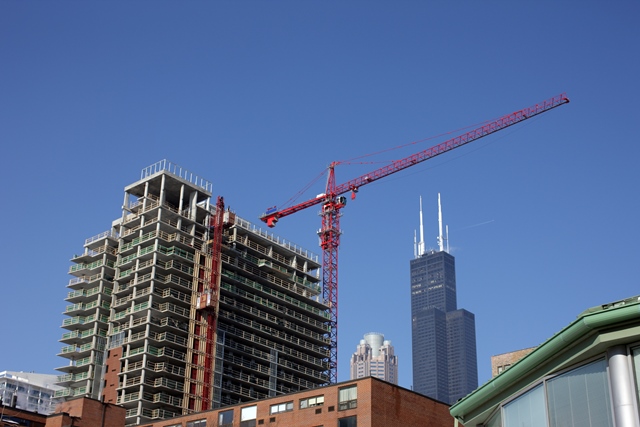Qualified Opportunity Zones For Real Estate
Date
June 7, 2018
Read Time
4 minutes
Share

If you have not yet heard of Qualified Opportunity Zones (O-Zones), you will soon. Created as part of the recent Tax Cuts and Jobs Act, O-Zone benefits are meant to spur economic growth through new development and investment in low income communities.
The Treasury Department has already certified thousands of O-Zones. In the Chicago area, some interesting zones for new development can be found (i) west of Fulton Market and north of the United Center; (ii) south of Roosevelt from Racine to Western, including much of the Illinois Medical District; and (iii) south of Cermak Road in the vicinity of McCormick Place and the old Michael Reese Hospital site. An interactive map of designated O-Zones can be found at https://www.cdfifund.gov/.
What are the Benefits of an O-Zone Investment?
- Deferral of Gain on Existing Investments. Gain from the sale of almost any property (including stocks and bonds, business assets and real estate investments) can be deferred to the extent that the gain is reinvested in an O-Zone Fund (discussed below) within 180 days of the sale that generated the gain. The tax deferral ends on the earlier of the sale of the O-Zone investment or on December 31, 2026.
- Up to 15 percent of the Deferred Gain Can be Permanently Eliminated. If the O-Zone investment is held for five years, 10 percent of the deferred gain on the old investment is permanently eliminated. If the O-Zone investment is held for seven years, the elimination percentage increases to 15 percent.
- Elimination of Tax on Sale of the O-Zone Investment. Most powerfully, new gain on sale of the O-Zone investment itself will be permanently exempt from Federal income tax if the O-Zone investment is held for at least 10 years.
So by holding an O-Zone investment for 10 years, 15 percent of the gain on the old investment is eliminated, the remaining gain on the old investment is deferred until 2026 and any new gain on the O-Zone investment itself is not subject to Federal income tax at all.
The amount of gain that can be deferred is limited to the amount of cash invested in the O-Zone investment. Taxpayers do not have to reinvest all proceeds of sale in an O-Zone property, just an amount equal to the gain on sale. If a taxpayer elects to reinvest less than all of the gain on the old investment, the taxpayer can still qualify for deferral of the portion of the gain reinvested.
How Are O-Zone Investments Made?
O-Zone investments can be made in business or real estate assets located in an O-Zone. Multi-family housing, office, retail, industrial, hotels and most other real estate asset classes should qualify.
Because this is an incentive for new investment, the acquisition of existing improved real estate is not likely to qualify unless the real estate has been substantially improved within 30 months of purchase, which means making improvements to the property in an amount at least equal to its original cost (for example, new property purchased for $3 million would qualify if at least $3 million in improvements are made within 30 months).
As mentioned, the new O-Zone investment must be made in an O-Zone Fund within 180 days of the sale of the old investment. Timing rules may permit the O-Zone Fund more time to actually purchase qualifying O-Zone property.
How Are O-Zone Investments Structured?
The new Tax Act says that O-Zone investments must be made by a qualified opportunity fund (O-Zone Fund).
Early indications are that an O-Zone Fund can be a “captive” special purpose vehicle set up by a taxpayer who wants to make a specific O-Zone investment. Aggregators of investment capital can also set up a “targeted” O-Zone Fund that focuses on a specific O-Zone investment and sources capital from multiple investors with gains to defer. Finally, the market may develop “true” O-Zone Funds with a mission to make multiple O-Zone investments across the country for the benefit of multiple investors with gains to defer, although timing rules may make such funds something of a challenge.
O-Zone investments can technically be made right now. However, there are many unanswered questions and, as with much of the recent Tax Act, technical guidance is needed from the Internal Revenue Service on how to apply the new rules. Among the many open questions are some pretty fundamental ones, such as whether a partner can defer his or her share of gain (or does the same partnership that sold the old investment have to make the new investment, as with a Section 1031 like-kind exchange). It is expected that such guidance will come late in 2018.
Commentary
The tax code is replete with incentives that, in the end, have not been successful in transforming distressed communities. But the new O-Zone rules contain powerful incentives that can make individual projects in those communities more viable by increasing the availability of capital and lowering its cost. Developers with O-Zone projects in mind may specifically seek capital from investors with large gains to defer. Traditional real estate syndicators may well see a niche in serving as a conduit for investors who wish to deploy rollover capital into qualifying O-Zone investments.
Additional Information:
Michael Tuchman
(312) 476-7550
mtuchman@lplegal.com
Matthew Hinderman
(312) 476-7557
mhinderman@lplegal.com
The information contained in this note is highly abbreviated and omits important details. Readers should not rely upon this note as a substitute for professional tax advice.